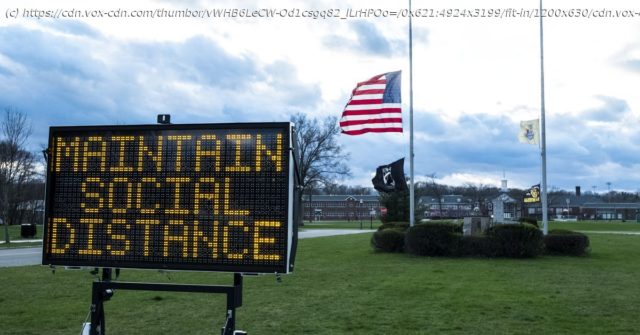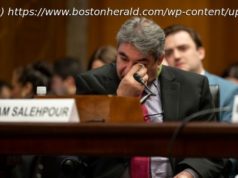The US’s third wave of Covid-19 is here. It was predictable and preventable.
America is in the middle of its third nationwide surge in Covid-19 cases — what some are calling a “third wave” — with reported cases hitting a recent peak of more than 70,000 on Friday. With that, the much-feared fall and winter surge of coronavirus cases that experts warned of for months may now be here. Despite the US already suffering at least 220,000 Covid-19 deaths — the highest death toll in the world — it looks like things are getting worse. As of October 20, the seven-day average of coronavirus cases was more than 60,000 — a new peak since the summer surge of Covid-19 abetted. That’s up from a recent low in the seven-day average of fewer than 35,000 cases on September 12. The increase doesn’t appear to be driven by a single state or region — although the Dakotas, Montana, and Wisconsin appear to be in particularly bad shape — but rather spikes across much of the country at once, with increases reported across the Northeast, Midwest, South, and West. (Some of the spike is also caused by more testing exposing more cases.) Unlike the summer’s surge of coronavirus, the US isn’t alone in its latest wave — cases are rising in much of Europe, too. Still, that doesn’t mean this was inevitable: With aggressive measures, developed nations like Canada, Germany, and especially Australia, Japan, New Zealand, and South Korea have kept their Covid-19 caseloads much lower than America’s or Europe’s as a whole. Experts have long warned that a surge was coming in the US in the colder seasons. Even though the country never fully suppressed its summer surge in Covid-19 cases, most states have moved to reopen more businesses, including risky indoor spaces like restaurants and bars, as well as schools, with colleges and universities proving particularly problematic so far. President Donald Trump, for his part, has encouraged the rapid reopenings — even after his own illness. Before he left the hospital, Trump tweeted, “Don’t be afraid of Covid. Don’t let it dominate your life.” He’s kept pushing a false sense of normalcy in the weeks since — even going as far as mocking masks and claiming, falsely, that they’re ineffective. (In reality, the evidence for masks keeps getting better.) The fall and winter still threaten to make things worse. Schools will continue to reopen. The cold in northern parts of America will push people back inside, where the virus has a much easier time spreading than the outdoors. Families and friends will come together for the holidays. A flu season could strain the health care system further. States will likely move to reopen more widely, especially as officials face pressure from businesses to reopen indoor spaces before colder temperatures make outdoor activities less feasible. Experts worry that Americans as a whole will get even more fatigued with social distancing and masking, now that the US is more than seven months into its battle against Covid-19. “It’s less excusable this time,” Crystal Watson, senior scholar at the Johns Hopkins Center for Health Security, previously told me. “We have an example of what happens when we reopen these types of businesses for indoor activities.” It doesn’t have to be this way. Cities, counties, states, and the federal government — or, short of all that, the public — could take social distancing seriously again. Governments could mandate masks, and the public could opt to wear them without a mandate. Bars and restaurants could close, voluntarily or not. Places that do open, such as schools, could try to adopt aggressive testing-and-tracing regimes to try to keep the coronavirus under some control. Without that, America’s coronavirus epidemic will keep getting worse. That would lead to not just more Covid-19 cases and deaths, but deal yet another blow to the prospects of the US returning to normal anytime soon. “If you do things the right way, you can do them,” Cedric Dark, an emergency medicine physician at the Baylor College of Medicine, previously told me. “If you do them the wrong way, then you’re going to get cases.”America keeps making the same mistakes After the spring outbreaks hit the northeastern US, much of the country, led by Republican leaders in states like Arizona, Florida, and Texas, moved forward with aggressive reopenings. The problem, experts said, is many of these places never suppressed their Covid-19 outbreaks. As epidemiologist Pia MacDonald at RTI International told me at the time, many states “never got to flat.” Case counts continued to climb, and states continued to reopen anyway. This created an environment that made it much easier for the coronavirus to spread. If there’s already some community transmission going on, then it’s simply going to be more likely that one person will infect another. Add more spaces in which infections are very likely — particularly close indoor spaces like bars and restaurants — and that risk can be increased dramatically. So cases started to increase in the summer. The current surge seems to be a repeat of the summer spike. Cases started to fall in late August, eventually reaching a brief plateau between mid-August and mid-September. But that plateau was still much higher than the peak of Covid-19 cases in the spring (partly, but likely not entirely, due to more testing). Yet states seemingly declared victory and started to reopen anyway — and now cases are rapidly climbing again. MacDonald is now repeating the same thing she told me in the summer: “We never got to low enough levels [of Covid-19] to start with in most places.
Home
United States
USA — Science America’s third Covid-19 surge is here. It was predictable — and preventable.






